New partnership announced with Borderless
Sona and Borderless announce an exciting partnership.
Building a staff schedule couldn’t be easier.
Reduce payroll errors with real-time T&A.
Fill 50% more shifts with your own employees.
Ensure shifts are covered even if you're understaffed.
Manage absence requests and approvals.
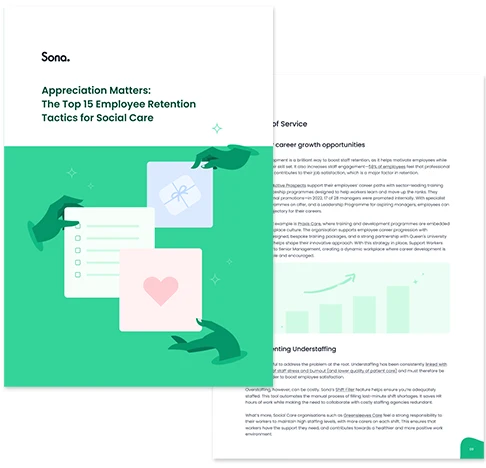
Practical ways to boost team morale with proven examples from across the sector.
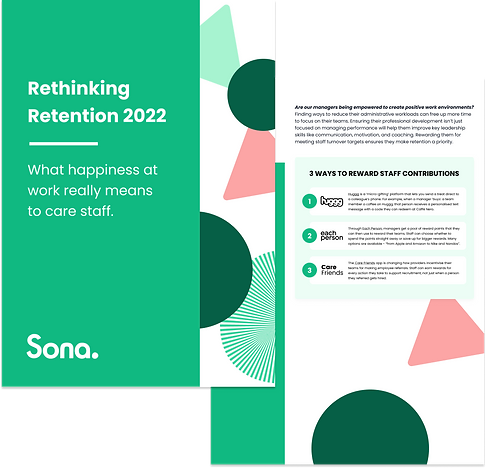
Find out what care employees say matters to them most at work.
Search and view employees with customised permission levels.
Key employment information all in one place.
Store visas, professional certifications and more with easy access.
Control personal and operational details of your staff.

Why are people leaving Social Care, and where are they going?
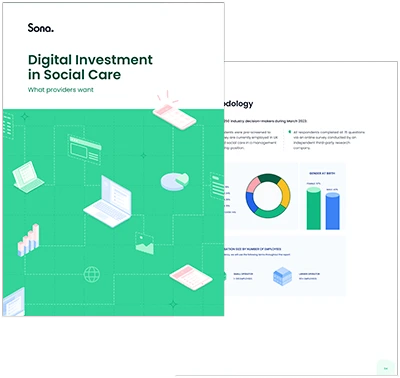
We asked 250 Social Care leaders about their attitudes towards digitisation and their plans for the next 12 months...
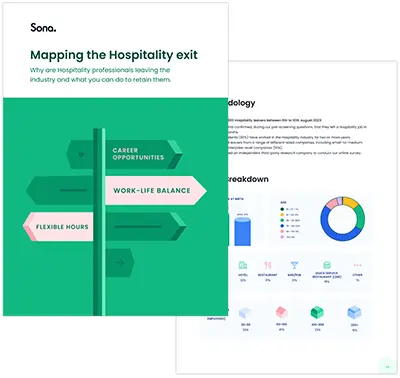
Why are Hospitality workers leaving the industry, and what can you do to retain them?
Share updates with a single click.

Staff can see relevant messages in one place.
Request post-shift feedback from staff.
Recognise staff contributions by sending them praise.
Identify staff at risk of churning.
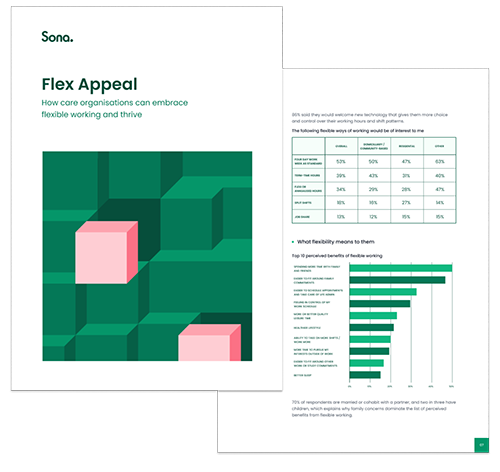
How care organisations can embrace flexible working and thrive.
Maintain quality of care and reduce costs.
Maximise profitability through AI-powered forecasting & scheduling.
Elevate your operational efficiency and guest satisfaction.
Streamline operations across sites.
Developed alongside Social Care experts with decades of combined experience.
See why we are the leading user-friendly, end-to-end platform that prioritises both efficiency and wellbeing.
The Sona Partner Network is an ecosystem of solution experts and complementary technologies.

Give staff greater visibility of shifts available to work, with a simple "shift claim" process to increase their income.
Improve employee engagement and retention with a seamless employee communication platform.
Happier staff provide greater customer experiences, which in turn drives return rates, revenues and recommendations.
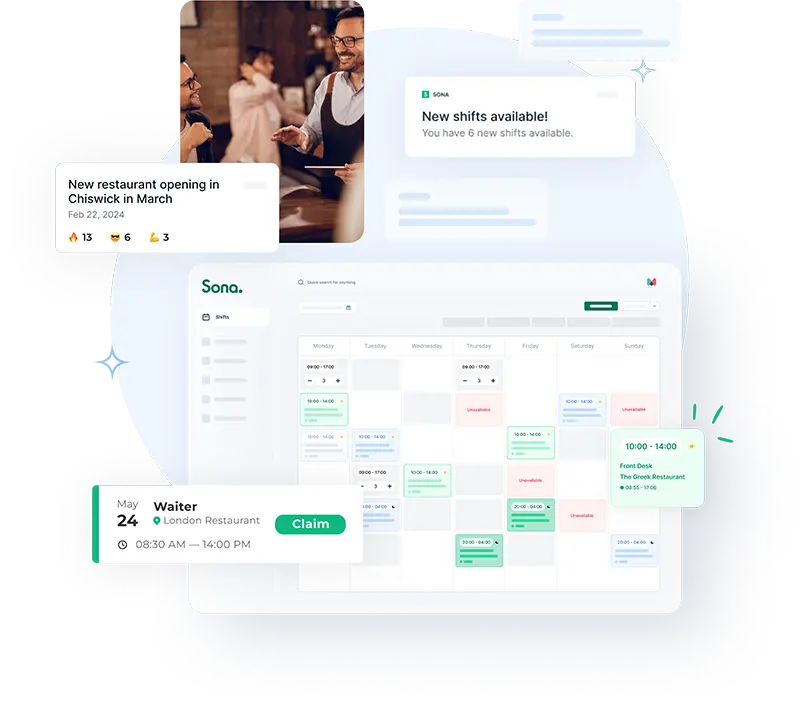
Give staff greater visibility of shifts available to work, with a simple "shift claim" process to increase their income.
Improve employee engagement and retention with a seamless employee communication platform.
Happier staff provide greater customer experiences, which in turn drives return rates, revenues and recommendations.

Meet the Sona team online with our webinar series or in-person at an event near you.
New research, insights, and strategies for frontline leaders.
Downloadable templates, reports and guides from Sona.
Stay up to date with the latest Sona news and research.
Learn how our customers are transforming their people operations.
| 3 min read
Sona and Borderless announce an exciting partnership.
| 2 min read
Sona and Found by Lottie announce an exciting partnership.
| 4 min read
Remove operational errors, drive efficiency, and help your team spend less time on admin with a unified solution.
PUBLISHED: February 2025
Download the report to learn how hospitality operators are embracing AI challenges and opportunities in 2025.
PUBLISHED: January 2025
Reveal the most important metrics in 2025!
PUBLISHED: December 2024
This infosheet is packed with practical insights to drive high-quality, low-regret WFM purchases.The urgent call for help is clear. This year’s Care Quality Commission (CQC) State of Care Report provides a stark assessment of increasing pressures on our social care system. Here's what you need to know.
6 minute read
Staff shortages and the ongoing struggle to recruit and retain staff are some of the largest challenges faced across the health and care sectors. Our Big Exit Interview report found that 1 in every 10 health and social care service workers could leave the sector this year.
Many of the key findings in the latest CQC’s annual assessment also point to a critical lack of government funding, which is affecting all areas of the health and social care systems.
Among the gloomy findings, there is some good news: the quality of care is reported to be mainly 'good or outstanding' despite the administrative chaos and the ongoing workforce crisis.
The report also concludes that there is some hope: the gridlock which has paralysed the system could be gradually eased with the help of new, innovative solutions which help to optimise workflow.
Blog highlights:
We look at some of those points in more detail below.
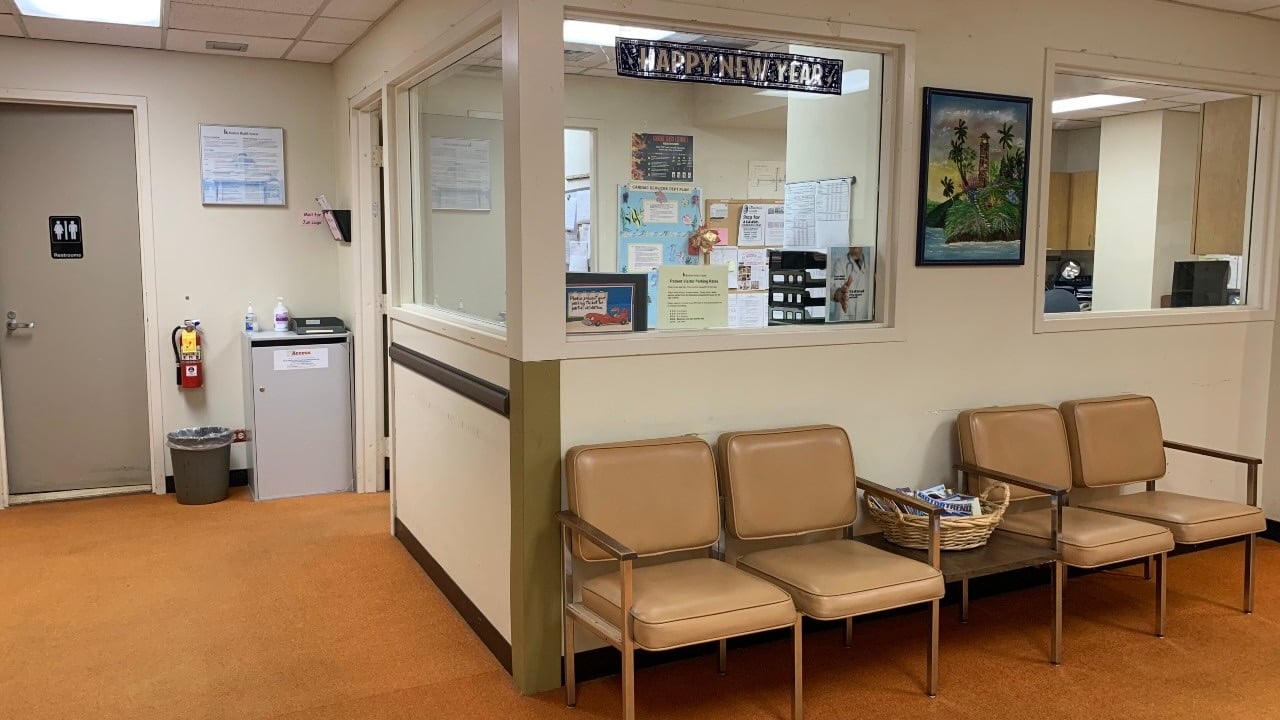 A gridlocked system that is leaving patients and staff dissatisfied
A gridlocked system that is leaving patients and staff dissatisfiedA care system can only function if there is good patient flow and sufficient resources available to meet the demand for services.
The gridlocked system described in the report compromises both patient safety and the safety of the entire system, staff included.
This standstill is an issue of high urgency due to its serious knock-on effects, including:
A major contributing factor to this standstill is the care workforce crisis, which 99% of NHS leaders believe is affecting their area.
Care homes with nursing had the highest sickness rates of 8.2 days, almost twice the pre-pandemic rate of 4.8 days. The average number of sick days in non-nursing care homes and homecare services was lower but still higher than pre-pandemic levels.
Staff vacancy levels are also now higher than they were before the pandemic, and the highest they have been for five years.
Increasing staff retention in the Social Care system is essential. During the first three months of 2022, 2.2 million hours of homecare could not be delivered because of insufficient workforce capacity.
High turnover is closely associated with high levels of employee dissatisfaction, and widespread post-pandemic burnout.
In our Big Exit Interview report, the two most-selected reasons for leaving among our 1,000 survey respondents working in social care were low pay and overwork.
These factors usually create a vicious cycle: employees feel like they’re going above and beyond and then receive minimal or no recognition.
Improving pay and conditions remains a huge challenge in care, but everything that can be done must be done to address the current workforce crisis.
This isn’t news, of course, but now more than ever, the government needs to invest in the health and care system, both in terms of funding and attention. Overall, patient care is at a ‘good or outstanding’ level, but at a very high cost to staff wellbeing.
Councillor David Fothergill, Chairman of the Local Government Association’s Community Wellbeing Board said: “Social care needs £13 billion of additional funding to address the long and short-term challenges the sector is facing. There needs to be immediate investment to end this gridlock.”
Without more money and long-term Social Care reform, it’s hard to see how providers can address the biggest workforce issue of all - pay rates.
Half a million people are waiting either for an adult social care assessment, for a care payment to begin, or for a review of their care.
Reducing this wait time needs to be a priority: of those waiting for a care needs assessment, 40% said that their ability to carry out day-to-day activities was now worse than when the assessment was requested.
These eye-popping figures might seem shocking, but they’re nothing new. The backlog of elective appointments and delay in social care assessment has only increased during successive governments and continues to do so.
Social care staff are not to blame: rising demand and staffing issues are behind these waiting times.
However, these delays are placing families or unofficial carers under mounting pressure, and increasing feelings of anxiety among those awaiting care as needs increase over time. In fact, the number of people giving substantial unpaid care has risen by 42% since the height of the pandemic, with caregivers’ health, well-being and paid work suffering.
 Innovative workforce solutions are emerging to help tackle the industry’s biggest problems
Innovative workforce solutions are emerging to help tackle the industry’s biggest problems While there is significant cause for concern throughout the system, the report also highlights the potential for positive change. The implementation of integrated care systems (ICSs) provides an opportunity to better identify good or poor quality of care, particularly in the local care systems, and make necessary changes.
Care providers are also looking into innovative solutions for Workforce Management as a way to increase retention and reduce friction for everyday tasks, allowing care staff to spend less time on admin and more time on care.
It's no surprise that technology is becoming increasingly popular to streamline payroll operations, increase staff engagement and reduce time spent on admin.
‘Workforce shortages across all sectors need to be addressed through innovative initiatives that look to the future. The focus should be on shaping more flexible workforce models that help local systems meet the needs of people – all people – who are in turn empowered to take a more active role in their own wellbeing.’ - Quote from 2022 CQC report.
The recent National Care Awareness Survey 2022 also discovered that 88% of over 600 surveyors would agree that digital technology (like Sona) 'has the power to help reduce workloads and carry out duties faster.'
What’s needed are innovative new ways to relieve some of the strain the health and social care systems are under. With easy-to-use apps like Sona, care workers can optimise their precious time by delegating time-consuming admin jobs to quick, accurate systems, and focusing on other important tasks.
Careful planning and prioritising are the way out of this gridlock, preserving what works and rethinking what doesn’t.
Download our Rethinking Retention report to discover insights and tips to help you retain more staff.
If you liked this article, why not subscribe to our newsletter to get the latest news and views delivered straight to your inbox?
6 min read
Rishi Sunak is now Prime Minister. What does his leadership mean for the Department of Health & Social Care and for the care sector? We look at his plans.
4 min read
As the official sponsor for this year’s National Care Awareness Survey 2022, here are our thoughts on its key findings about the UK's social care sector.
13 min read
Sona’s digital transformation webinar addressed challenges and solutions for achieving a bright future in Social Care. Check the main takeaways here.